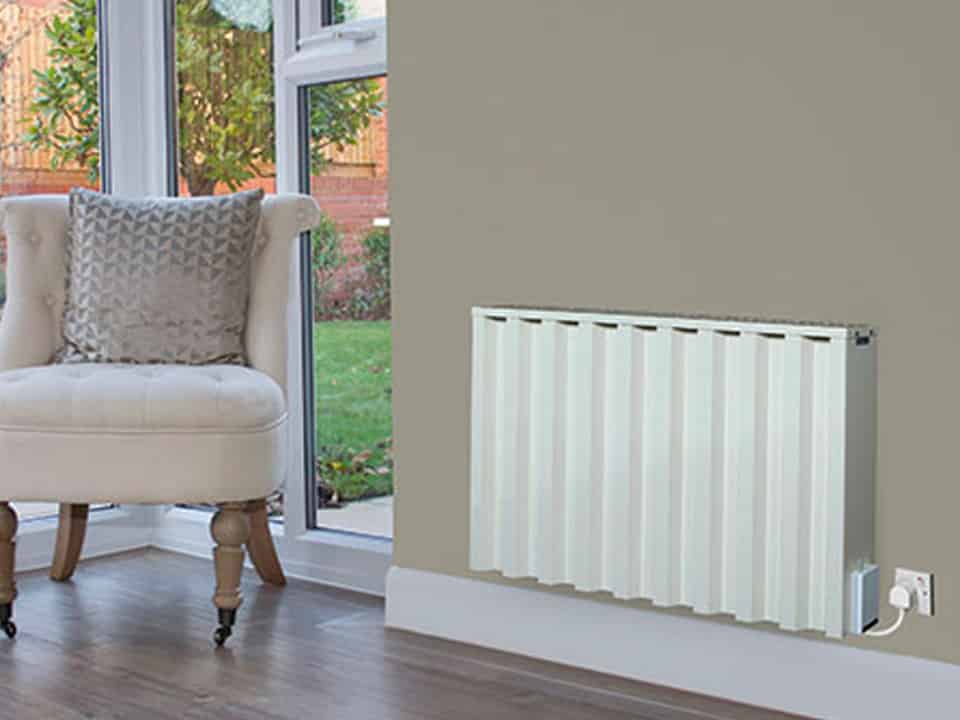Novo Rad vs Electro Rad Aeroflow Electric Radiators
There are many other brands of electric radiator available on the market, but how do they compare to Novo Rad heaters?
One popular model of electric radiator is the Aeroflow by Electro Rad. Aeroflow radiators are manufactured in Germany, much like Novo Rad, but have a number of differences, including a 20mm clay core and built in thermostat, compared to Novo Rad’s superior 23mm clay core and wireless thermostat technology.
See how they match up below, with our helpful comparison table.
–
| – | Novo Rad | Aeroflow |
|---|---|---|
| Clay Core Depth | 23mm | 20mm |
| Wireless Thermostat as standard? | ✅ | ❌ |
| Maintenance free? | ✅ | ✅ |
| Radiator Warranty | 8 years manufacturer’s warranty | 30 years |
| Thermostat Warranty | 2 years | 2 years |
| Wi-Fi capabilities? | ✅ | ✅ |
| Installation service available? | ✅ upon request | ❌ |
| Supply only available? | ✅ | ✅ |
| Next day delivery? | ✅ | ✅ |
| Transparent pricing? | ✅ | ✅ |
–
Novo Rad heaters are manufactured in Germany and are sold exclusively through The Elektro Store. But what makes them so unique?
–
Not only do they come as standard with a fully programmable wireless thermostat, they are one of (if not the) only heaters to boast a 23mm clay core. The patented mica clay core inside every Novo Rad heaters is efficient, unique and offers high heat retention.
Paired with the purpose built convection chamber found towards the back of every Novo Rad heater, it’s a sure fire way to heat your home both efficiently and effectively.
But what makes the 23mm clay core so much better than other 20mm cores available on the domestic market?
20mm is less than 23mm
–
Starting with the obvious, there is a physically thinner clay core inside 20mm heaters. With less stone to retain the generated heat, they won’t be able to produce as much heat, thus resulting in a less effective heater.
This extra amount of clay core also offers higher heat retention, meaning you can stay warmer for longer and use less energy while doing so.
Smaller tablets with embedded kettle elements
–
Inside most 20mm clay core heaters, there are a number of smaller clay core tablets, all with embedded kettle elements, inter connected with several connection points.
The more connections, the more chance there is of the heater losing power.
Let’s have a look in greater detail. Inside 20mm clay core heaters, generally the clay core tablets are laid out in two rows of four, positioned parallel to each other at the top and bottom. Let’s say for example there are 8 tablets with 8 different connections.
If one of these connections fails, you lose 1/8th of the power in your heater. If it’s a 1kW heater, that is 125w of heating power. This means there are 8 different connections which could fail and cause your heater to partially fail.
In addition to the numerous electrical connections, you have the added annoyance of embedded kettle elements within each tablet. These kettle elements are far less effective than the elements which run directly through the centre of the clay core tablets in Novo Rad heaters.
Also in Novo Rad heaters, there are only two clay core tablets, each with their own connection. Because of this, there is much less chance of your heater partially failing as there are less connections.
Although we cannot vouch for other companies’ heaters, the connections inside Novo Rad heaters are robust, high quality and not prone to failing. This means you choose a reliable, effective dynamic smart storage heater when you choose Novo Rad.
Wireless thermostats vs integrated thermostats
–
With many electric heaters (especially those who only offer a 20mm clay core), you are supplied as standard with an integrated thermostat. Heaters with integrated thermostats mostly position their temperature sensor at the bottom of the heater, the warmest part of the room.
Although heat rises, any area directly surrounding the heater is bound to be warmer than an area away from the heater. By purchasing a heater with a wireless thermostat, which itself contains the temperature sensor, you can take the temperature reading from anywhere in the room. This ensures even the most difficult to heat areas of your room are kept at your desired temperature.
Some companies will offer you the ability to purchase a wireless thermostat as an added (often chargeable) extra, but most of the time these thermostats are not OEM (original equipment of manufacturer) and are not designed specifically for use with this heater. This only opens you up to a potentially unreliable, prone to failure thermostat system with no support from the thermostat manufacturer themselves.
If you do choose to go with their built in thermostat options, should anything go wrong or your thermostat needs replacing, you have to go through a massive inconvenience of taking apart your heater for a “simple” repair or replacement.
From their experience, Novo Rad also told us that, “often with built in thermostats, the PCB (printed circuit board) is not necessarily built to withstand high levels of heat and is thus prone to failure.”
The final disadvantage of built in thermostats is the ability to see what is shown on the LCD display. Usually positioned on either the front of the heater, meaning you must be at eye level with the heater to read the screen, or on the side of the heater, meaning you cannot position the heater directly next to a wall, they can be difficult to read. With ergonomics in mind, wireless thermostats are the answer.
Novo Rad heaters come as standard with a wireless thermostat for your comfort. Novo Rad do not offer a built-in thermostat, meaning you get only the best thermostat system included in the quoted price. No added extras or hidden fees, just honest, accurate heating control.
Convection chamber
–
As we mentioned before, Novo Rad heaters are manufactured and designed to include a purpose built convection chamber. This convection chamber assists with heat convection, allowing the cool air to effectively pass through the heated clay core and circulate around your room as warm air. As most electric heaters use natural convection, along with the assistance of some radiant heat to keep you warm, this part of their construction is vital.
Without this convection chamber, the natural convection is not aided in any way, thus providing less convected heat, resulting in longer heating times and less effective warmth.




